Turkey is not only famous for its rich history, stunning landscapes, and warm hospitality, but also for its mouthwatering desserts. From the world renowned baklava to creamy rice pudding and unique sweets flavored with nuts, honey, and syrup, Turkish desserts hold a special place in the country’s culture. Across every city, you will find pastry shops and local markets offering traditional sweets that have been perfected over centuries. For travelers with a sweet tooth, exploring the diverse range of Turkish desserts is one of the most unforgettable experiences in Turkey. Now, let’s take a closer look at some of the most famous Turkish desserts and discover the unique flavors you shouldn’t miss during your trip.
Baklava
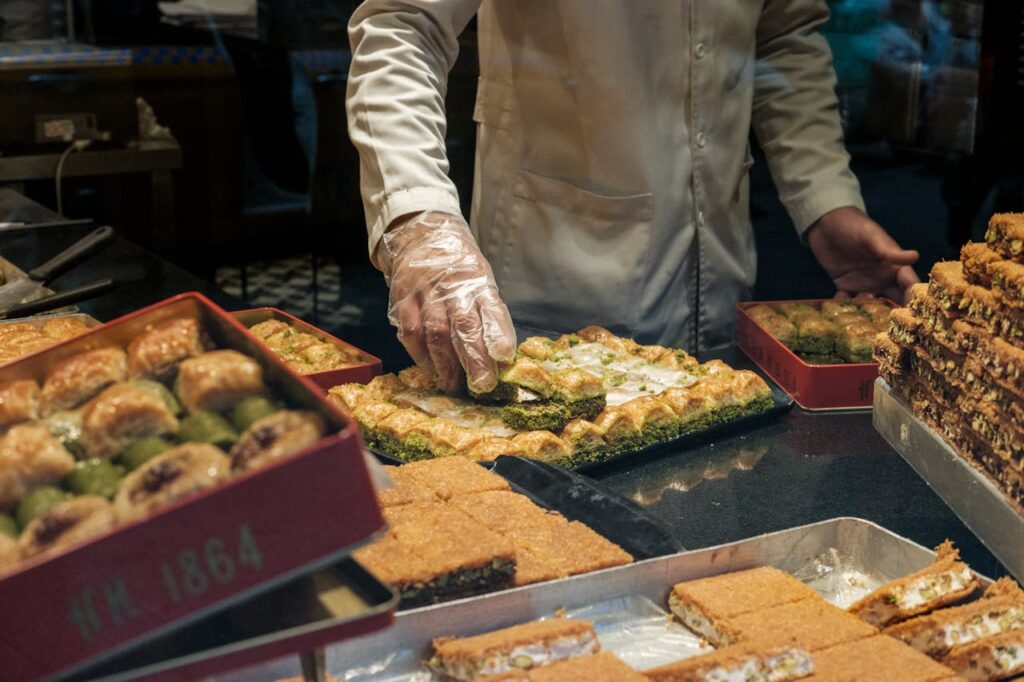
Turkey’s most internationally recognized dessert is without a doubt baklava. Made from paper-thin layers of phyllo dough filled with finely ground pistachios or walnuts and soaked in sweet syrup, the result is a delicate pastry that simply melts in your mouth. As a tradition of the Ottoman palace cuisine, baklava has been cherished for centuries and remains one of the most iconic Turkish desserts. Many of the renowned pastry shops that produce baklava today have been in operation for more than a hundred years, passing down their craft from one generation to the next.
Preparing authentic baklava requires true mastery. Every element must be perfectly balanced the thinness of the pastry, the quality of the nuts, the richness of the butter, and the exact ratio of syrup. Each step follows a recipe that has been refined over centuries, making baklava not just a dessert but a symbol of Turkish culinary artistry. While delicious baklava can be found throughout Turkey, connoisseurs agree that the very best is made in Gaziantep, a city famous worldwide for its pistachios and time-honored baklava making tradition.
Künefe
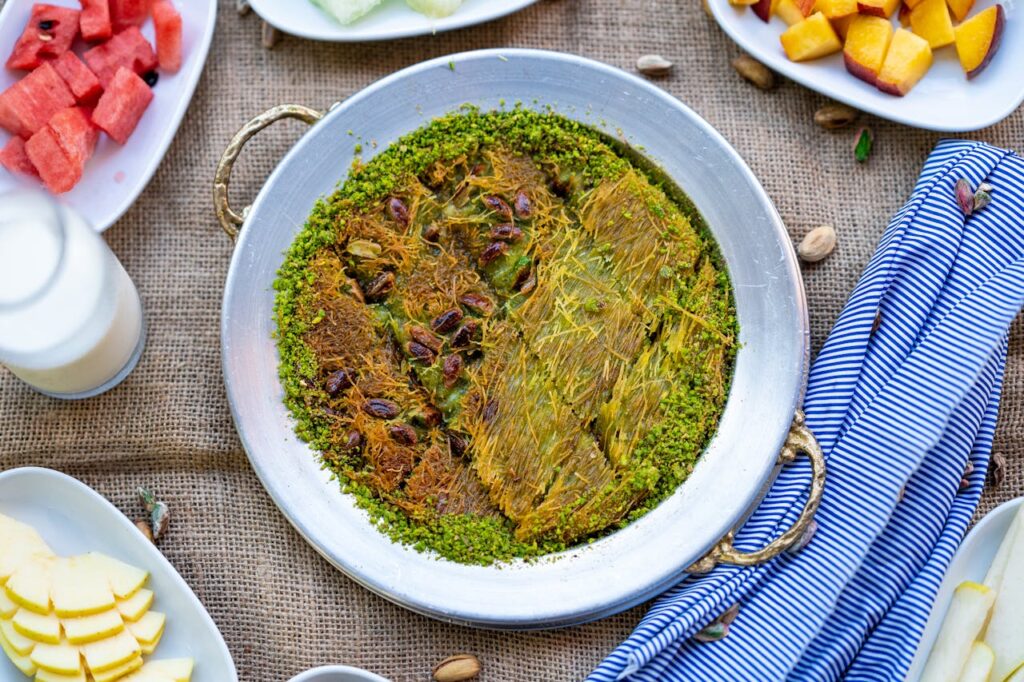
Originating from Hatay, künefe is one of the most unique desserts in Turkish cuisine. It is prepared by layering shredded kadayıf pastry with a filling of unsalted cheese, then baking it until golden and topping it with a generous drizzle of syrup. Served hot and sprinkled with plenty of crushed Antep pistachios, künefe offers a perfect balance of crispy pastry, melted cheese, and sweet syrup.
Although you can find excellent versions of künefe in cities like Istanbul and Diyarbakır, connoisseurs always compare them to the authentic Hatay künefe, which is regarded as the gold standard. What makes it so special is the use of local cheese and the long-standing tradition of preparation that has been perfected in the region.
This one of a kind cheese based dessert is also enjoyed with a scoop of ice cream placed on top, especially during hot summer days. However, it must always be eaten warm in order to fully appreciate its signature texture the crispness of the pastry combined with the soft, melted cheese inside.
Lokum (Turkish Delight)
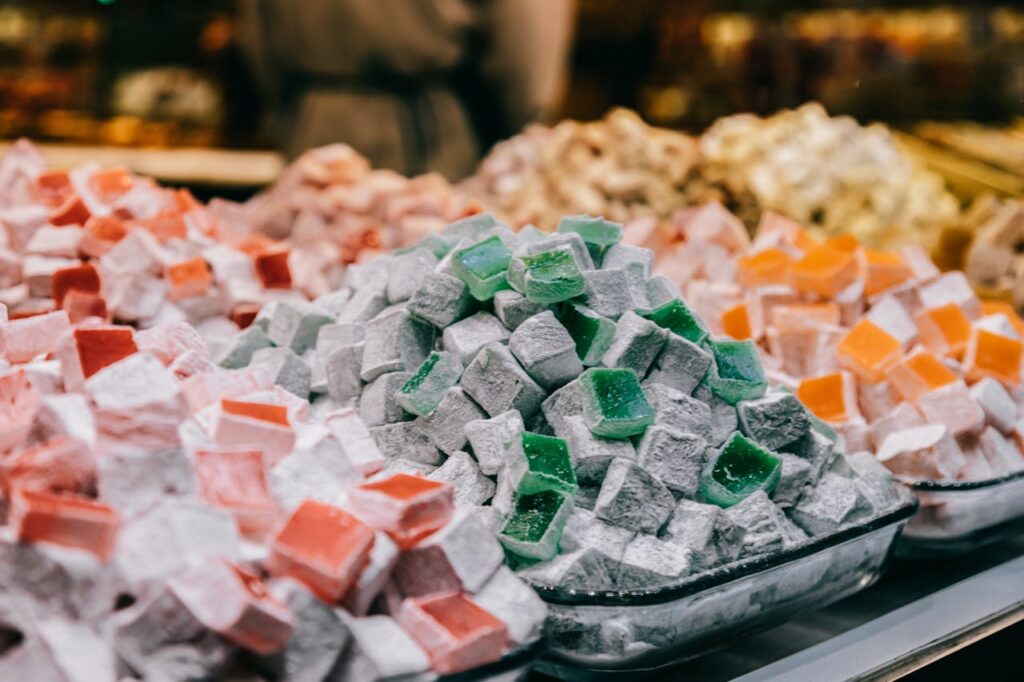
Dating back to the Ottoman era, lokum, also known worldwide as Turkish Delight, is one of the most iconic sweets of Turkey. Traditionally prepared with flavors such as rose, lemon, pistachio, or hazelnut, this chewy treat has been a beloved part of Turkish culture for centuries. It is most often served alongside a cup of tea or strong Turkish coffee, making it a staple of hospitality. For many first-time visitors, Turkish Delight may resemble jelly candies, yet its texture and taste are far more delicate and refined.
Made with natural ingredients and offered in hundreds of varieties, lokum reflects the creativity and richness of Turkish confectionery. Handmade Turkish Delight is especially sought after, with each piece carefully prepared to preserve both tradition and flavor. Among the countless types, the most famous are pistachio-filled and clotted cream (kaymaklı) Turkish Delight, both of which stand out as timeless favorites that locals and tourists alike seek out across the country.
Sütlaç (Turkish Rice Pudding)
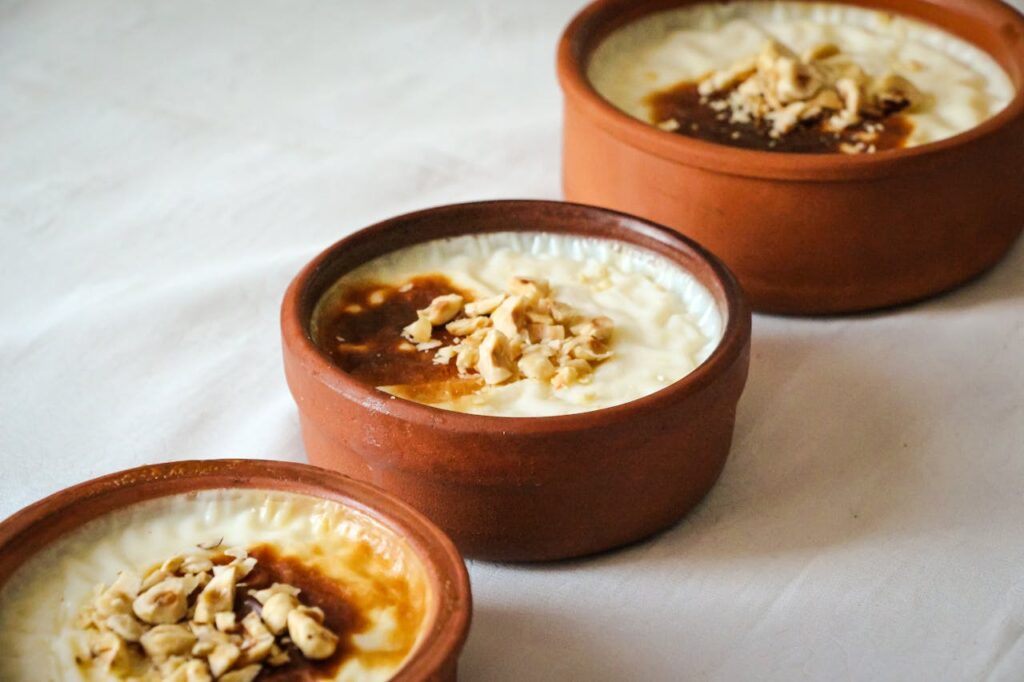
Made with only rice, milk, and sugar, sütlaç, or Turkish rice pudding, is one of the simplest yet most beloved desserts in Turkey. Its charm lies in turning just a few ingredients into a creamy, comforting treat. The most famous version is fırın sütlaç, baked in the oven until the top develops a caramelized, slightly burnt layer that gives it a unique flavor. It is a dessert frequently prepared at home, valued for being both light and satisfying.
What makes sütlaç truly special is the delicate balance of its ingredients. Achieving the perfect taste depends on cooking the rice and milk together at just the right ratio and simmering it for the ideal amount of time. While it can be enjoyed warm, sütlaç is most commonly served cold, especially during the summer months, making it a refreshing option among traditional Turkish desserts.
The best-known sütlaç comes from Hamsiköy in Trabzon, a region famous for producing milk of exceptional quality. In many dessert shops across Turkey, you will notice signs advertising “Hamsiköy Sütlaç,” indicating that the recipe is prepared in the style of this renowned Black Sea village. For those who appreciate authentic flavors, trying this version is a must when exploring Turkish cuisine.
Tavuk Göğsü & Kazandibi (Unique Ottoman Milk Puddings)
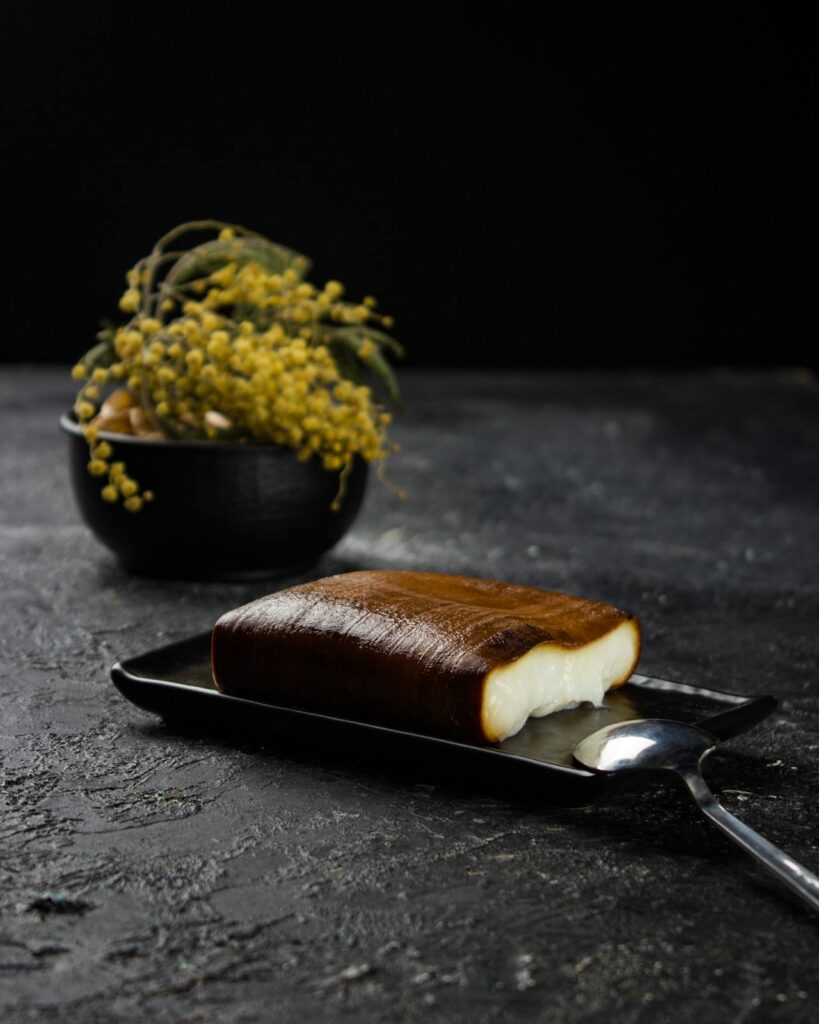
Among the most unusual yet fascinating desserts of Turkish cuisine is Tavuk Göğsü, a milk pudding that traces its origins back to the Ottoman palace kitchens. Prepared with finely shredded chicken breast, milk, and sugar, it surprises many visitors at first glance. The idea of combining meat with dessert may sound strange, but once tasted, the creamy texture and delicate sweetness quickly erase any doubts. This harmony was a culinary discovery perfected by Ottoman chefs, who were known for their creativity and innovation in blending unexpected ingredients.
The caramelized version of this dessert is known as Kazandibi, which is made by slightly burning the bottom layer to create a smoky, toffee-like flavor. This variation has become just as beloved as Tavuk Göğsü itself and is often enjoyed as a signature traditional Turkish dessert in restaurants and dessert shops across the country. Both versions represent not only a sweet treat but also a glimpse into the inventive spirit of Ottoman gastronomy, where bold experiments often turned into timeless classics.
Aşure (Noah’s Pudding)

Aşure, also known internationally as Noah’s Pudding, is one of the most symbolic desserts in Turkish cuisine, carrying both cultural and religious significance. It is traditionally prepared with a mixture of grains like wheat, legumes such as chickpeas, dried fruits, and a variety of nuts. This wholesome blend makes it one of the richest and most diverse desserts in the world.
Aşure is closely associated with the month of Muharrem, when it is customarily cooked in large quantities and shared among neighbors, friends, and relatives. Over centuries, it has become a powerful symbol of generosity, hospitality, and the value of community. The recipe does not follow a single fixed formula; instead, it changes depending on personal taste and regional traditions. Some prefer it sweeter with plenty of raisins and figs, while others highlight the nuttier flavors with hazelnuts, walnuts, or pistachios.
It is also a dessert that divides opinion while some adore its complex texture and rich taste, others may find it unusual at first. However, many believe that one should not judge Aşure until experiencing a well-prepared bowl, as a truly good version captures the essence of Turkish culinary heritage and the spirit of sharing.
Helva

Helva is one of the most symbolic and versatile sweets in Turkey, prepared in different ways across the country. Depending on the region, it can be made with semolina, flour, or tahini, each version offering its own unique taste and texture. Helva has long been a dessert of tradition, appearing on dining tables during religious holidays, family gatherings, and special occasions.
Beyond being a sweet treat, helva carries deep cultural meaning. It is famously prepared after funerals, when fresh helva is cooked in the home of the deceased and shared with guests as a gesture of remembrance and community support. In fact, in Turkish, the expression “to eat someone’s helva” has become a metaphor for their passing. At the same time, helva also symbolizes joy and hospitality, making it a food of both sorrow and celebration.
In recent years, helva has moved beyond its traditional associations, with new specialty shops and brands offering creative takes on this age old dessert. From classic tahini helva blocks to freshly prepared semolina helva served warm, the varieties are endless. There is also a long-standing custom of eating helva after fish dishes, a tradition still kept alive in many Turkish households and restaurants today.